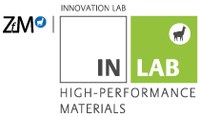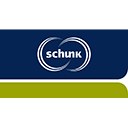Coating of fiber materials
- Coating of fiber materials
-

Partner: Schunk Kohlenstofftechnik GmbH
Somewhat similar to the current situation in the automotive industry, politicians and operators of aircraft fleets are calling for ever more efficient engines and lower emissions. The guidelines of the European strategy document "Flightpath 2050" provide for a reduction of CO2 emissions per passenger kilometer of 75% by 2050. This ambitious goal can only be achieved with significantly more efficient engines. Moreover, even the customers of aircraft manufacturers are consider the efficiency of the engines as important. In addition to the costs for personnel and the investments for the acquisition of a new aircraft, the operating and fuel costs are the largest cost factors for the airlines. The desire for ever more efficient engines is leading to a tough innovation competition in the industry. Despite the dominant market position of the two American engine manufacturers GE Aviation and Pratt & Whitney and the English engine manufacturer Rolls-Royce, the German engine industry was able to assert itself in the past with a comparatively high level of innovation in global competition, especially as a module manufacturer.
Engine efficiency can be increased by employing higher combustion temperatures. The materials that have been used so far are approaching their limits and alternative materials with a higher temperature resistance are needed. In the high-temperature range of engines and gas turbines, nickel-based alloys are currently used, which are already very well developed materials. Through the development of a number of different alloy compositions and manufacturing processes, it has been possible to increase the heat resistance of these materials in incremental steps over the last few decades up to approx. 1,100 °C. Together with the progress in the field of ceramic thermal barrier coatings, this resulted in ever higher levels of efficiency. As a progressive alternative to nickel-based alloys, ceramic composites (CMC: Ceramic Matrix Composites) are particularly suitable for engine technology due to their higher temperature resistance, also with regard to thermal shocks and changing temperature loads. By switching to CMC, a "temperature quantum leap" in combustion temperatures by approx. 150-200 K is possible. Another advantage of the CMC materials is their significantly lower density (around 2-3 g / cm3) compared to nickel-based alloys (around 8 g / cm3), which is an additional weight advantage for the use of CMC in aircraft engines. The higher temperature resistance of the CMC materials or the lower cooling air requirement and the resulting higher machine efficiency can only be realized on the market if economic operation is also given. For achieving this, it is imperative to significantly increase the long-term stability of the CMC materials - from a few hundred hours to > 15,000 hours under real operating conditions. In addition to the engine industry, the topic of CMCs has also gained in importance in recent years in the development of highly efficient, stationary gas turbines for power generation. In the market, the power generation efficiency has become an important differentiating factor between the individual providers, which increases the need for disruptive development steps, such as the transition from nickel-based alloys to CMCs. In addition to lower fuel costs, the higher potential for efficiency is also of great social relevance regarding the avoidance of CO2 emissions.
In order to have a long service life and the required tolerance for damage, the ceramic fibers must be provided with a ceramic coating prior to further processing them into the composite material. This coating step represents the technological key to an high-quality material and, at present, cannot be found in Europe. Only American engine manufacturers currently have the technology to continuously coat silicon carbide fibers with a functional layer and there is a risk that Germany and Europe will fall behind on this issue in the engine field, a situation that must be avoided at all costs. This key technology for the production of silicon carbide fiber-reinforced ceramics is to be implemented in cooperation between JLU and Schunk Kohlenstofftechnik as part of the ERFD - Innovation Laboratory for high-performance materials.
More informations: mail to Maximilian von-Roeder
- Index Innovationlab

